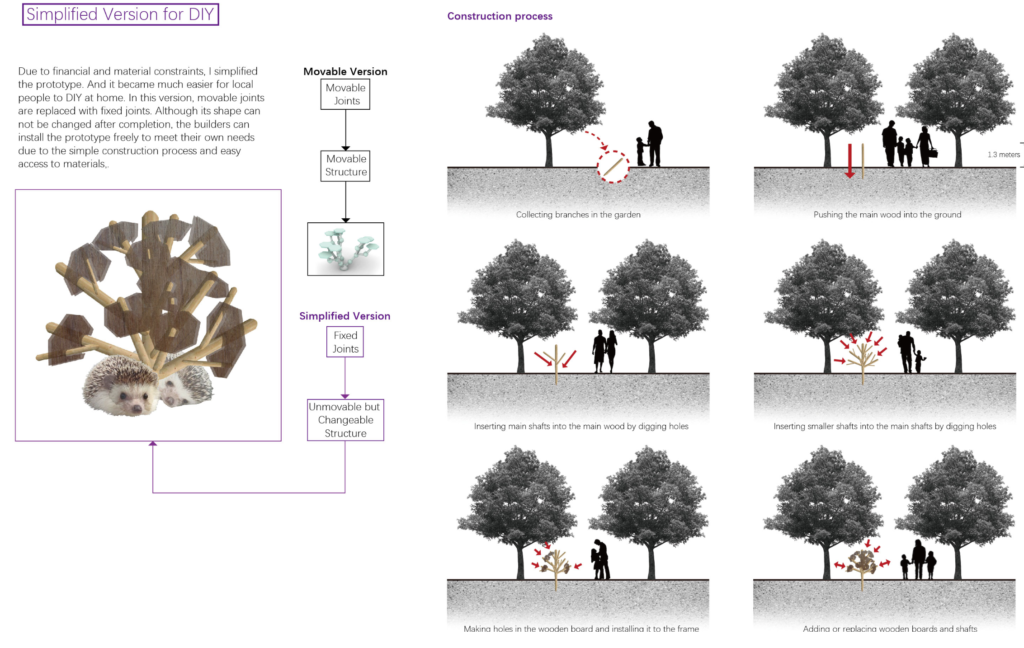POSSIBLE FABRICATION
Possible fabrication is part of Synergetic Landscapes Project. The project aims to create a synergetic system where human and wildlife can share one neighbourhood. To solve the isolation between different species in different biotops in the city, we are trying to generate biological corridors. By matching several precedents to different types and situations of bio-corridors, we can draw a conclusion that differet types of bio-corridors are suitable to different situations. Especially for the bio-corridors in cities, the most common type is punctate bio-corridors which is named by ourselves. It is really difficult to organize continuous liner bio-corridor in the city, so connecting small green spots to be a puctate bio-corridor is the best way to solve the biological migration problem in cities.

Taking Grangetown as an example, we are trying to design a effective bio-corridor by generating several small green points which could be a tree or a piece of greenland.

A fabrication called possible fabrication is created to adapt to different circumstances. Covered with the vegetation, the fabrication could perform the role of the green points between ecological areas, and change into a biological corridor together with other original green points. It is further assumed that the fabrication could serve as nests for insects or shelters for small animals. Some parts of this fabrication are modular which can be replaced to undertake different functions.
The scale of the whole fabrication can be changed by the growth of the structure. The concept, “changeable” is the key to deal with the challenge from the complex factors in the city. The different functions are simulated in the Grasshopper (a computer software).


In order to make it much easier for local people to DIY at home, the fabrication has been simplified. The main structure is made up by branches which you can collect in the park or your own backyard. As for the panels in the fabrication, you can use old wooden boards from your old furniture to make some. If you don’t have access to wooden boards, you can create the panels by using branches and willows. The builders can install the prototype freely to meet their own needs due to the simple construction process and easy access to materials.

DIY Tutorial
Portfolio Gallery
Contact
Email: wangd48@cardiff.ac.uk





